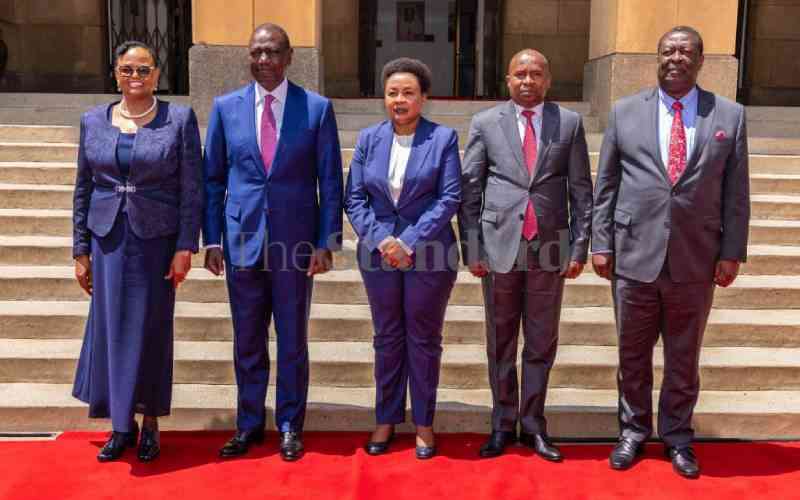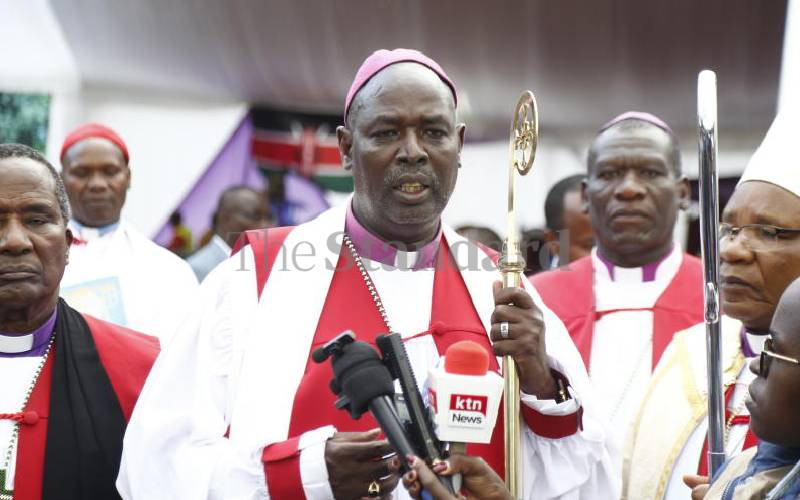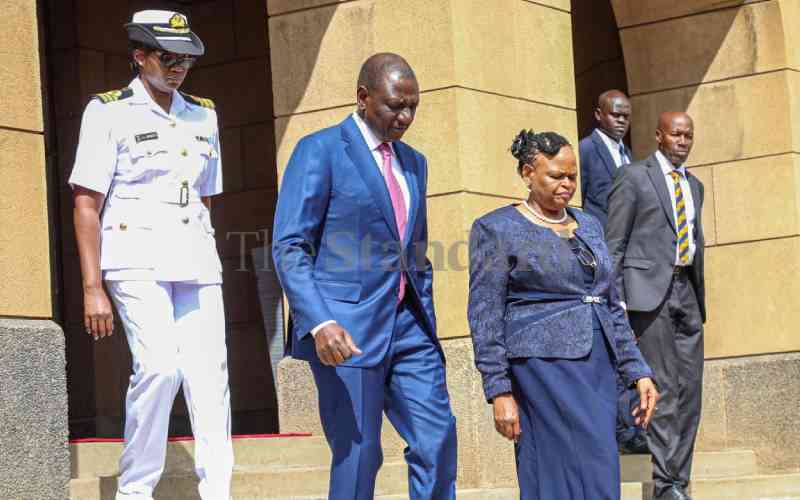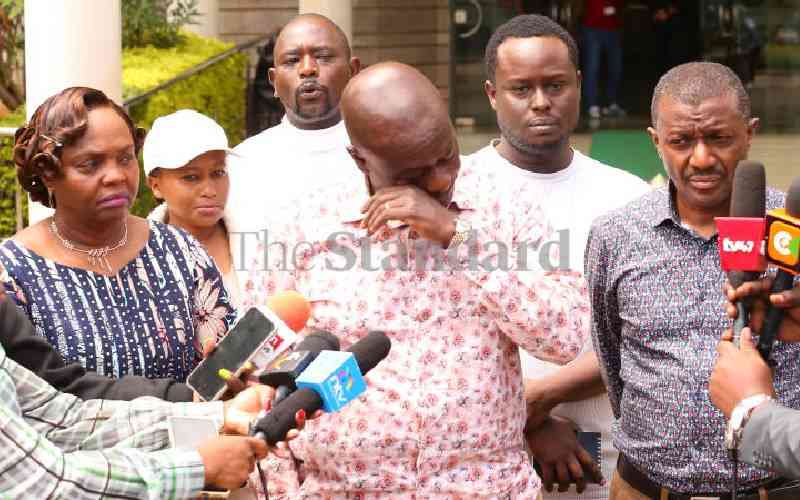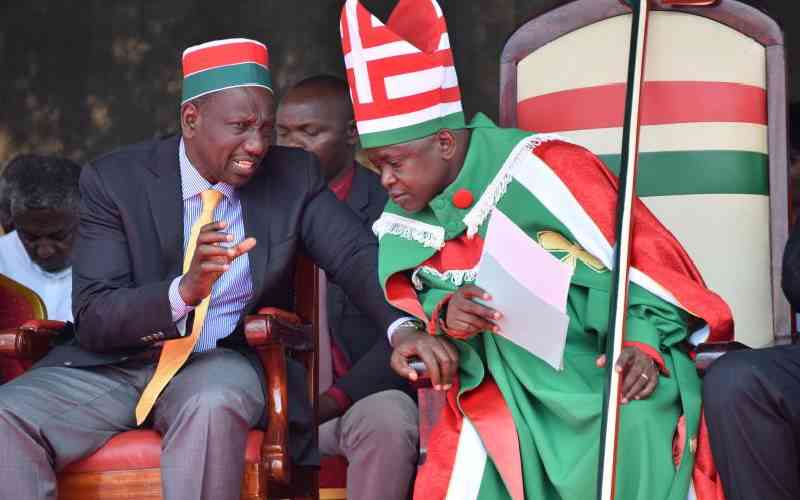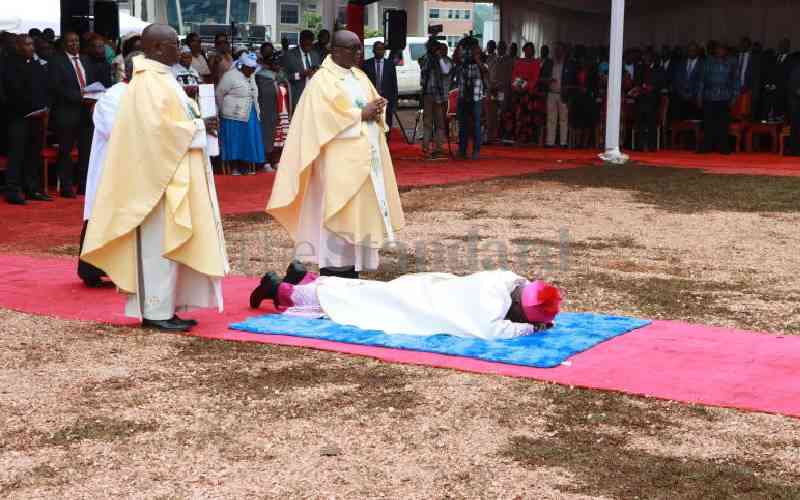 |
|
The seeds of tribal suspicion were gradually taking root in the name of containing the Mau Mau uprising in 1948. |
By KAMAU MUTUNGA
The ethnic boundaries between pre-colonial Kenyan communities were fluid. All communities ensured negative ethnicity was still-birthed.
There was little if any pronounced ethnicity despite the Maasai and Kikuyu fighting during the latter’s cattle rustling sprees.
Kikuyu women would later get married in ‘okabi,’ as Kikuyus nicknamed Maasai land, and girls born from the intermarriages were named Nyokabi.
Charles Hornsby in his erudite 2013 effort, Kenya: A History Since Independence notes that “the ‘tribes’ of pre-colonial Kenya were not a hard, immutable collective, but reflected gradations of shared origin, language and culture.”
The Kikuyu, Embu and Meru of Central Kenya spoke mostly intelligible languages “and people living on the borders between such communities could have been unaware of their own ‘tribe.’ And at an individual level, ethnic identities were not genetic, “but fluid and incorporating.”
But this changed in 1945 when Kikuyu career corps returned from World War II only to find their fertile land forcibly taken by the colonial government. The land (scarce as it was to support a ballooning population) was later given as reward to the White War veterans, mostly British soldiers. These former frontline war porters took to Mt Kenya and the Aberdare forests demanding freedom and land. The British demonised the Kikuyu as dangerous ‘terrorists.’ Cruel Colonial Intelligence Officer Richard Meinertzhagen had long predicted in his 1904 diary that the people in Central Kenya “will be the most susceptible to subversive activities. They will be one of the first tribes to demand freedom from European influence and in the end cause a lot of trouble.”
To discourage the insurgency and inter-tribal groupings, the British employed the strategy of ‘divide and rule.’ Each community was to hole up in defined districts, but the Kikuyu were to be spied on and their activities reported. Respected anthropologist Louis Leakey, as a colonial intelligence hand was very effective in spying and tracking down terrorists, as he was fluent in Kikuyu and Kiswahili, according to Sonia Cole in his 1975 bio, Leakey’s Luck.
‘Divide and rule’
The seeds of tribal suspicion were gradually taking root in the name of containing the Mau Mau uprising in 1948.
The 1949 Beecher Committee on Education was particularly influential in cementing tribalism, as it not only sought to introduce Christian principles to curb ‘decaying moral standards’ but also advised that pupils from class one to four be taught in vernacular, further knotting the ethnic fibre and inculcating tribal identity from an early age, notes Martin Meredith in his 2011 tome, The State of Africa: A History of the Continent since Independence.
Politics made matters worse since before the imposition of colonial rule, Kenya had no trans-ethnic political structures. But with independence in 1963, that changed with irrevocable consequences. To get to parliament, says Meredith, a candidate had to win an election-in his home area.
Being in parliament meant a community had its fingers, itchy or otherwise, within reach of the national cookie jar. To galvanise support meant playing the ethnic card. Playing the class card was also useful because wealthy politicians were able to make a vote in their favour more worthwhile.
As Hornsby reminds us, “the importance of wealth as a route to power, and of political power as a route to acquire both wealth and access to state resources has also meant that the same elites dominate both politics and economics and fight their battles in both spheres.”
The Luo, Kalenjin and Kikuyu have traditionally been the ‘star-crossed lovers’ of negative ethnicity in Kenya. The bile between the Kikuyu and Luo bubbled over in 1969 with the death of national politician Tom Mboya. That the convicted killer was a Kikuyu, Nahashon Njenga Njoroge, made matters worse when President Jomo Kenyatta, also a Kikuyu detained opposition hothead Oginga Odinga, effectively skirting his community away from the centre of power and by extension, the aforementioned national goodies.
Stay informed. Subscribe to our newsletter
With the two communities having such divergent customs that are at total variance with one another - even in language - they have pitted them on a tribal collision course since the bloody political frost of 1969.
The first 20-years of Uhuru thus gradually saw the “incorporation (on junior terms) of the Kalenjin into Kenyatta’s Kikuyu-centred alliance,” points out Hornsby, and the gradual marginalisation of the Luo alongside the embedding of a series of advantages for the Kikuyu community. There was no inevitability about the cleavage created in 1963-1969 between Kikuyu and Luo: it was a by-product of a competition over other issues, which gradually assumed an ethnic flavour.
Indeed, 1969, ’91-’93 and 2007-08, were the years when politically instigated ethnic violence reared its ugly tribal head with land rights, poverty, elite survival strategies and State abuses being the spark to the ethnic wood, more so between the Kalenjin and Kikuyu who were transplanted to the Rift Valley after independence via large buying companies and on the infamous ‘willing buyer, willing seller’ basis.
Nandi Rebellion
It was not very hard for politicians to stir the Kalenjins into ethnic animosity. Ever since Colonel Meinertzhagen lured Kalenjin chief Koitalel Arap Samoei under the guise of calling a truce to end the 11-year Nandi Rebellion, only to shoot the Orkoiyot as they were about to shake hands, the Kalenjin have been wary of outsiders.
Cultural anthropologist Mari Wormack in her study of the community contends that their fighter blood had their warriors employing guerrilla military tactics in organised cattle rustling raids, besides the primary role of protecting the community against any potential invasion.
That they valued their autonomy and remained hostile to strangers who tried to encroach on their territory made it even easier to excite political hostility against the Kikuyu every election season, despite the two communities living cheek by jowl.
“Ethnic tensions were reinforced by consolidation of political power support along ethnic lines,” concurs Hornsby. President Moi’s Kalenjins were always the core of the ‘government,’ and the Kikuyu of the ‘opposition’, leaving the Luo community united but uncertain on who to back. It took the 2013 UhuruRuto victory to somewhat tame the election bile that boils the ethnic blood of the Kalenjins and the Kikuyus.
 The Standard Group Plc is a
multi-media organization with investments in media platforms spanning newspaper
print operations, television, radio broadcasting, digital and online services. The
Standard Group is recognized as a leading multi-media house in Kenya with a key
influence in matters of national and international interest.
The Standard Group Plc is a
multi-media organization with investments in media platforms spanning newspaper
print operations, television, radio broadcasting, digital and online services. The
Standard Group is recognized as a leading multi-media house in Kenya with a key
influence in matters of national and international interest.
 The Standard Group Plc is a
multi-media organization with investments in media platforms spanning newspaper
print operations, television, radio broadcasting, digital and online services. The
Standard Group is recognized as a leading multi-media house in Kenya with a key
influence in matters of national and international interest.
The Standard Group Plc is a
multi-media organization with investments in media platforms spanning newspaper
print operations, television, radio broadcasting, digital and online services. The
Standard Group is recognized as a leading multi-media house in Kenya with a key
influence in matters of national and international interest.



